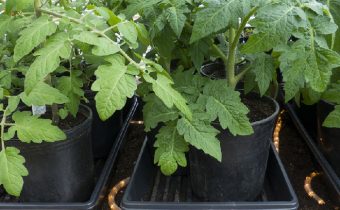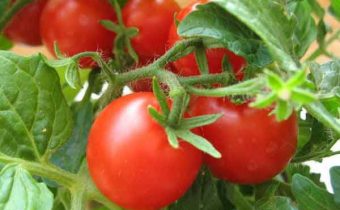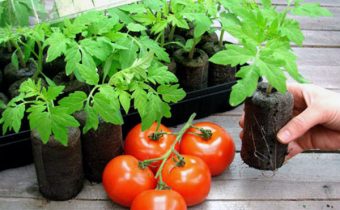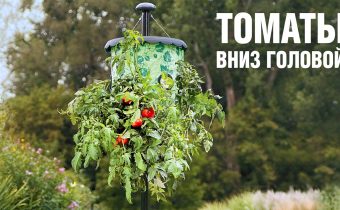Great way to grow tomato seedlings
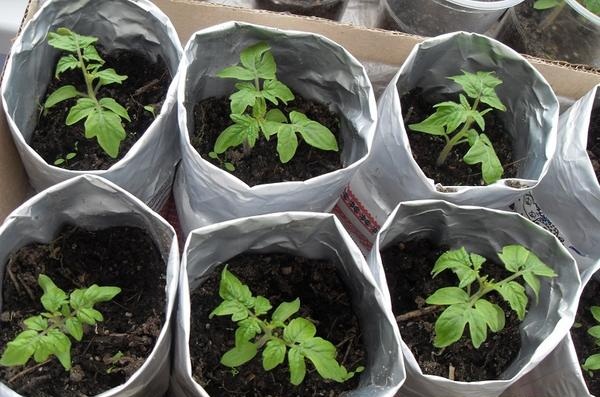
Self-made tanks for growing tomato seedlings very popular among vegetable growers. This allows you to give a second life to already served things and save the family budget. Most often milk packs and ordinary plastic bags go in search of containers.
What packages can be used
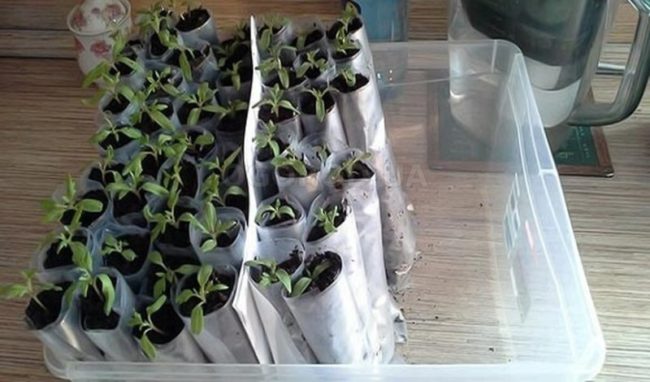 For planting tomato seedlings are quite suitable ordinary plastic bags. You can use household roll bags for breakfast. A size of 10 by 15 cm will be quite enough.
For planting tomato seedlings are quite suitable ordinary plastic bags. You can use household roll bags for breakfast. A size of 10 by 15 cm will be quite enough.
In addition, packing from various dairy products is perfect:
- soft milk packaging, kefir (fin-pack, bertha-pack). They are made of high density polyethylene;
- semi-rigid packaging from dairy products (sour cream, yogurt, cottage cheese). It is made of thermoplastics of different composition. Better saves the shape than the previous version;
- cardboard boxes of various kinds. The material from which such packaging is made durable and lightweight.
Skillful gardeners have learned to fit under the seedlings and large bags. Of these, you can build a kind of cassette for seedlings.
Growing tomatoes in cardboard boxes or soft packages is much more convenient than in plastic bottles. Round bottles in cross section cannot be placed close to each other, which means that a lot of valuable centimeters are lost on a bright home window sill.
How to prepare the container and how to plant
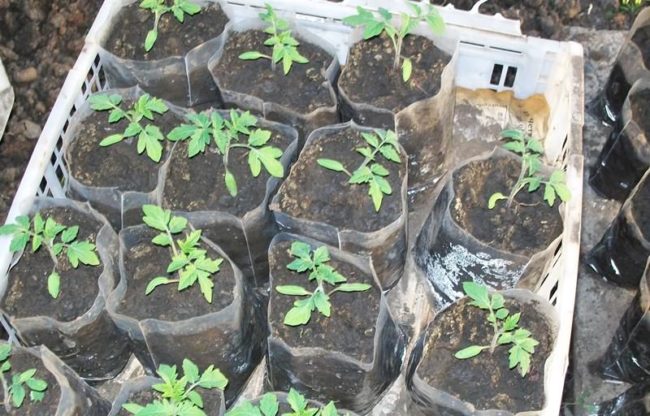 It is better to prepare milk containers in advance as they appear and become free from contents. To begin with, you should cut off the upper part of the bags, stepping back from the base 11-12 cm. Then thoroughly wash them with a sponge with soap or with dishwashing liquid. It is very important that no product remains remain in the corners. During storage, they can rot and rot. This is fraught with the emergence of diseases of the root system of seedlings.
It is better to prepare milk containers in advance as they appear and become free from contents. To begin with, you should cut off the upper part of the bags, stepping back from the base 11-12 cm. Then thoroughly wash them with a sponge with soap or with dishwashing liquid. It is very important that no product remains remain in the corners. During storage, they can rot and rot. This is fraught with the emergence of diseases of the root system of seedlings.
The second stage of preparation involves the formation of a drainage system. To drain the excess water in the bottom area you need to make several holes. The size of the holes is important. Too big holes will contribute to the leaching of soil, and too small ones will not be able to perform their function. The optimal size of the drainage holes is considered to be the size equal to the diameter of a simple pencil.
Prepared packaging should be carefully dried and stored for storage until planting. Some gardeners before planting conduct additional disinfecting treatment homemade packaging. To do this, dilute the solution of potassium permanganate again well washed its inner surface. In this case, the risks of the spread of pathogenic microorganisms are minimized.
This container is suitable for sowing seeds of 1-2 pieces in each package, and for planting already grown sprouts. Before planting, the containers must be filled with nutrient primer ⅔. With the growth of tomatoes, the soil can be gradually poured. When using small packages, you need to pour 1-2 tablespoons of soil in them, put a seedling and roll the package into a bag. Such bags occupy little space. For convenience, they can be placed on an old tray or tray.

To make a cassette from a large package can be as follows:
- the first thing you need to moisten the soil and fill it in the package;
- it is convenient to lay out the package with the soil on any pallet (tray, baking tray) and seal it with scotch tape so that the soil does not spill out;
- from the bottom of the bag must be made a lot of holes (needle);
- on the upper side, you need to cut the cross-shaped holes, in which it is convenient to sow the seeds.
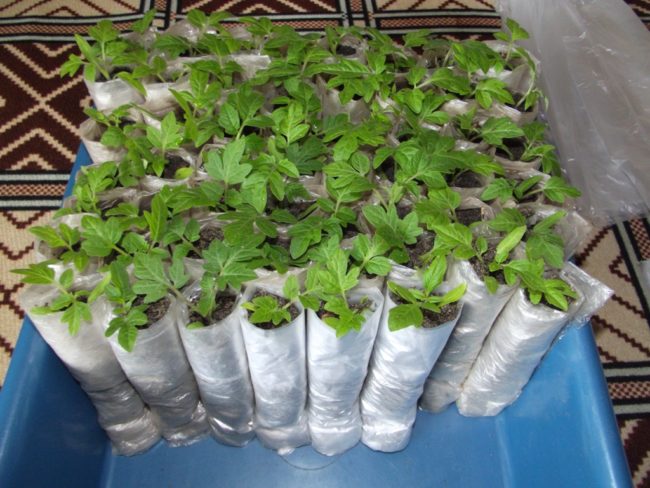
When it comes time to replant the seedlings, you can simply cut the bag with scissors.
When sowing seeds directly in individual containers, it is safer to put two seeds in the soil. In the future, you can choose a sturdier seedling.
Advantages and disadvantages of homemade packaging
Milk bags and ordinary bags as containers for planting seedlings have several advantages over other containers:
- availability;
- take up little space, and therefore save space on the windowsill;
- facilitate replanting into the ground (packages can be simply cut, while the root system is not damaged);
- opaque material does not allow sunlight to the roots;
- the ability to easily make drainage holes;
- large volume allows you to develop a powerful root system.
Among the shortcomings, some vegetable growers note that plant roots can suffocate in polyethylene. In fact, with loose soil structure and properly organized drainage, the risks of such a problem are minimal.
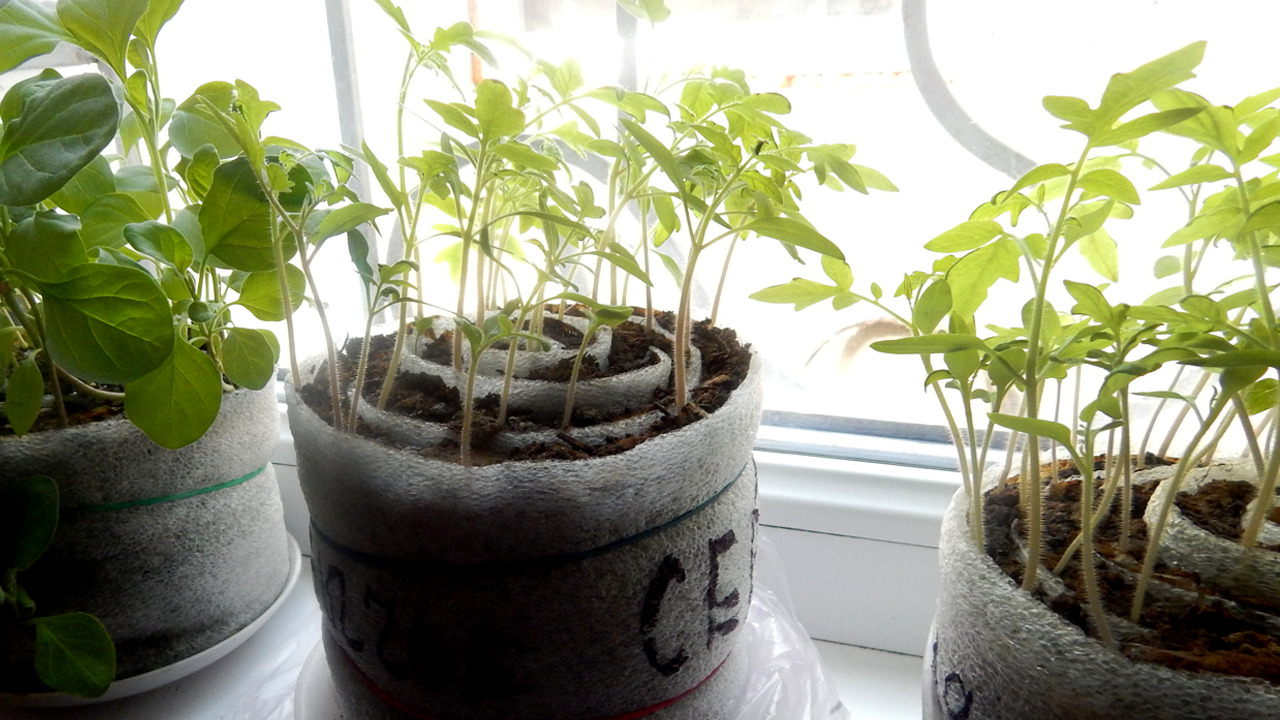
As an experiment, you can try to plant several seedlings in unwanted milk bags and on your own experience to evaluate an economical way. In addition, the care of tomato seedlings growing in dairy bags is no different from the usual.


 (1 ratings, average: 4,00 from 5)
(1 ratings, average: 4,00 from 5)